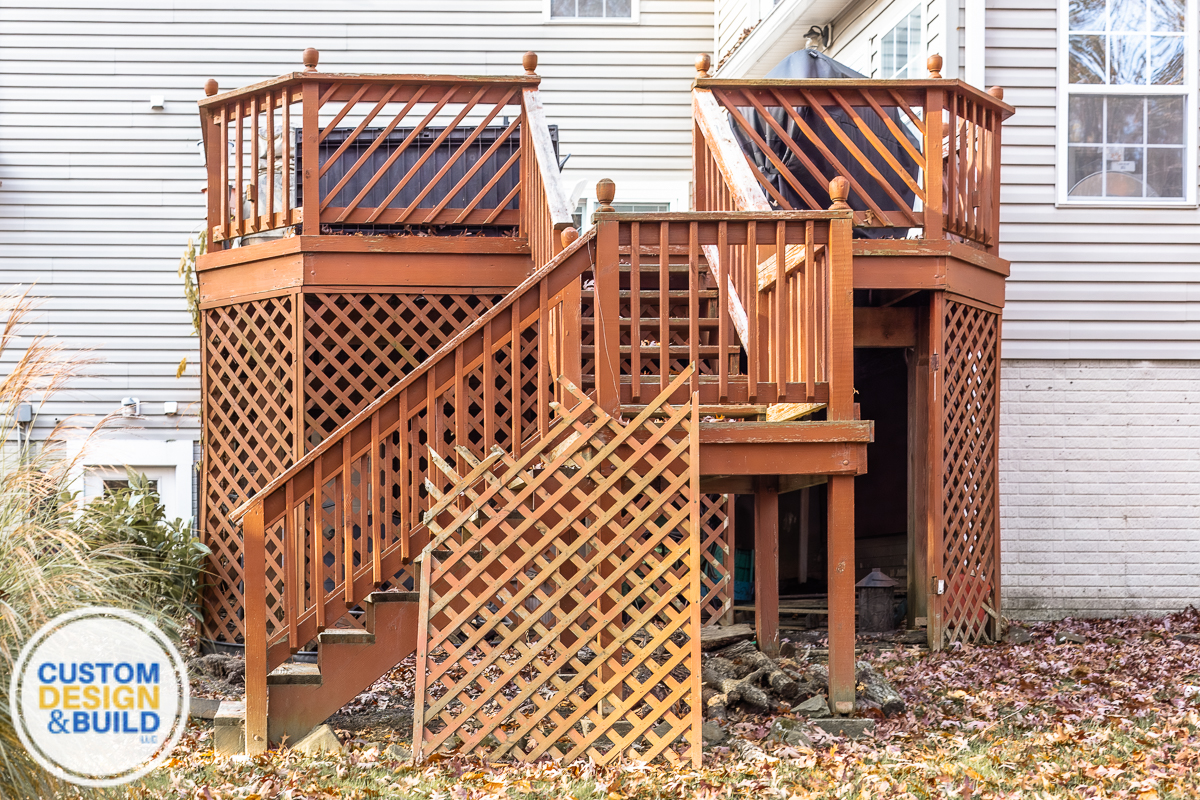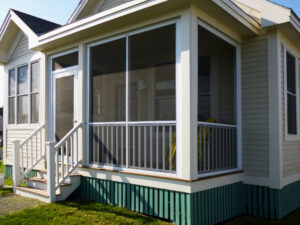If you’re a homeowner in Harford County with an older wood deck, you may be wondering whether it’s still safe — or time for a full replacement.
Many Maryland homes were built with basic, builder-grade decks. Over time, even well-maintained wood begins to weaken. While some issues can be repaired, others are signs that your deck has reached the end of its lifespan — especially if you’re considering upgrading to low-maintenance composite decking.
At Custom Design & Build LLC, we help homeowners identify when it’s time to stop repairing and start fresh. Below are seven signs your deck might need more than just a touch-up.
1. Rotting or Spongy Wood
Wood and moisture don’t mix well over time. If your deck boards, posts, or beams feel soft underfoot or crumble when you apply pressure with a screwdriver, you’re likely dealing with wood rot.
You might also notice:
-
Dark spots or discoloration
-
Mushy or “spongy” sections
-
A musty smell underneath the deck
Rot is more than a cosmetic issue — it’s a safety concern. Once it starts in the structural components like joists or support posts, the integrity of the deck is compromised.
2. Wobbly or Loose Railings
Your deck’s railing should be rock-solid. If it moves when you lean on it, or if sections feel unstable, it’s a sign the fasteners or posts are deteriorating.
This is especially common with older wood decks where the connections have loosened or the wood around them has weakened. In most cases, reinforcing a failing railing is only a temporary fix if the core structure is also damaged.
3. Sagging or Uneven Decking
If your deck feels like it “bounces” when you walk across it — or if certain areas are visibly sagging — it’s time for a closer look.
Common causes include:
-
Weakened joists
-
Failing footings
-
Poor original construction
A sagging deck isn’t just uncomfortable — it’s a red flag for potential collapse. Don’t ignore these shifts, especially if your deck is more than 10–15 years old.
4. Cracked or Splintered Boards
Some surface wear is normal, but if your deck boards are splitting, warping, or shedding splinters regularly, they’ve likely passed their prime.
Even if the framing underneath seems sound, widespread damage to the deck surface may not be worth repairing. This is a great time to consider switching to composite decking, which resists warping, splinters, and fading — and never needs to be stained.
5. Rusted or Popped-Up Fasteners
Nails and screws keep your deck together — until they don’t. Rusted hardware, missing joist hangers, or screws that no longer hold tight are all signs of deeper issues.
You may notice:
-
Nails popping out of boards
-
Rust streaks around brackets
-
Fasteners pulling away from the ledger board
These small failures add up to big safety concerns, and often signal that the deck is no longer structurally secure.
6. Your Deck Is Over 15–20 Years Old
Even with regular maintenance, most wood decks have a lifespan of 15 to 20 years. Pressure-treated wood, in particular, starts to break down after years of exposure to rain, sun, and freeze-thaw cycles.
If your deck was built before the mid-2000s and has started to show any of the issues above, it’s smart to start planning for a replacement — rather than waiting for something to fail.
7. It’s a Constant Repair Project
Are you spending more time fixing your deck than enjoying it? Constant patch jobs are a strong indicator that your deck is on borrowed time.
Instead of replacing boards year after year, many homeowners opt for a full rebuild — often using composite materials that:
-
Last 25–30 years
-
Resist moisture, rot, and insects
-
Require virtually no upkeep
It’s a smarter investment, and you’ll finally have a deck that looks great year-round.
Is It Time to Replace Your Deck?
If two or more of these signs apply to your deck, it’s likely time to talk with a professional. At Custom Design & Build LLC, we specialize in replacing worn-out, builder-grade decks with custom solutions designed for Maryland homeowners.
Whether you’re ready to make the jump to composite decking or want expert advice on what’s possible, we’re here to help — from design to permitting to build.
👉 Ready to talk? Fill out our quick contact form to schedule a consultation and get honest advice on whether a deck replacement makes sense for your home.






